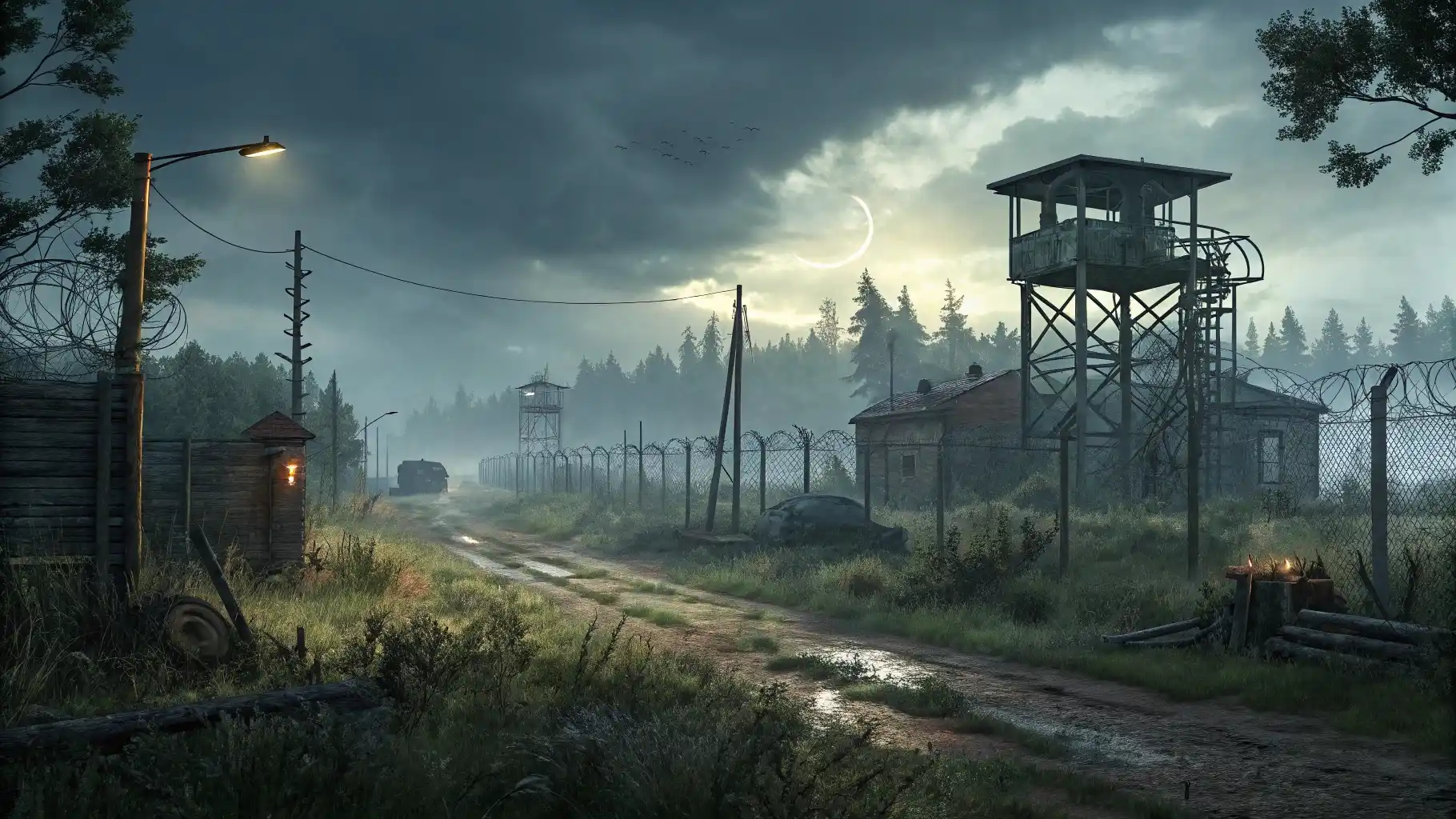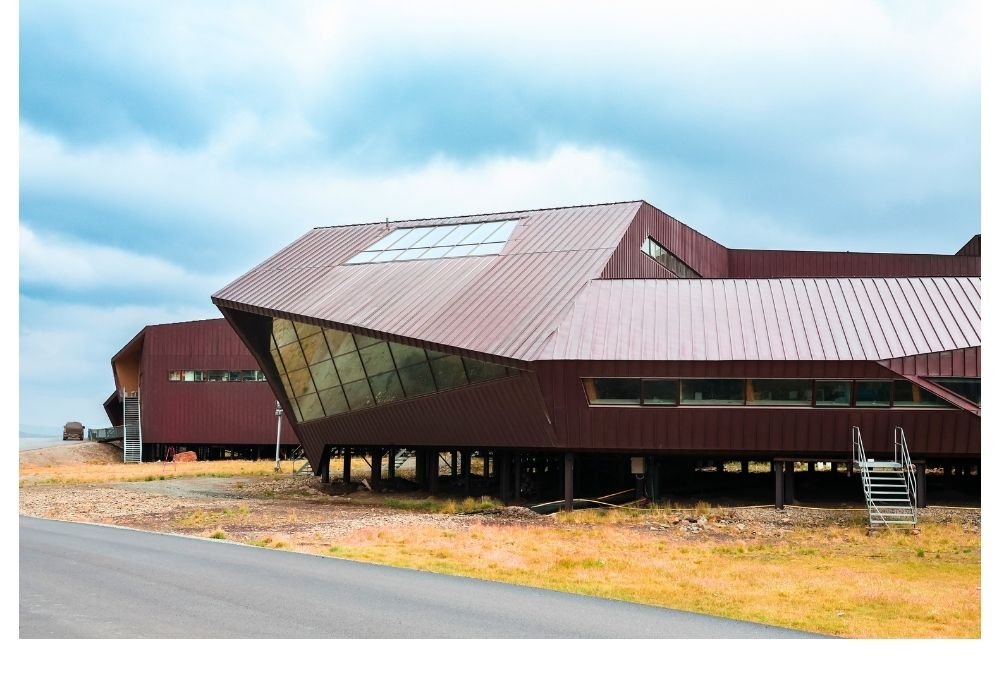
Dust clings to the air, and silence feels almost oppressive. You’re not just lost; you’ve crossed into a realm where few dare to tread.
Stepping beyond the borders of what’s permitted, every sense sharpens—your heart races, and you wonder what hidden truths lie ahead. Adventure beckons, yet a quiet fear whispers in your ear. Some places are restricted for a reason. They hold secrets too powerful to remain open to the world.
This journey will push you to the edge, revealing experiences that transform the very way you see the unknown. Ready to uncover what’s been kept hidden?
1. Chernobyl’s Reactor 4 Control Room, Ukraine

The haunting remnants of Chernobyl’s Reactor 4 stand as an indelible symbol of both tragedy and resilience. A place where history collided with human error, the reactor’s control room is locked in a time capsule, frozen since the fateful 1986 disaster. As you step inside, the stale air is thick with the weight of a global catastrophe, and the haunting silence makes every creak of the decaying infrastructure feel almost as if it’s echoing the agony of the past. The eerie glow of radiation signs still adorns the walls, remnants of the apocalyptic event that reshaped the world’s approach to nuclear power.
Wandering through this forsaken space, you’ll discover equipment covered in layers of dust, left behind in haste by workers who never thought they’d abandon their posts forever. There’s an almost oppressive sadness here, a reminder of the human cost that comes with both scientific progress and neglect. Yet, there’s also a quiet beauty in the way nature has started to reclaim its ground. Trees break through the cracked concrete, as if the Earth itself is determined to recover, no matter the scars it bears.
Key Practical Information:
- Peak/Off-peak Seasons: Best visited in spring and autumn, with pleasant weather for exploration. Winter can be harsh, and summer brings more crowds.
- Best Ways to Reach and Explore: Access is strictly controlled by government-sanctioned tours, often departing from Kiev. Pre-booking is essential, as entry is highly restricted.
- Ideal Duration of Visit: A one-day tour is sufficient for a guided visit to the control room and surrounding areas.
- Must-try Local Experiences: Learn about the local history at the Chernobyl Museum in Kiev before your trip, and sample traditional Ukrainian dishes like borscht and vareniki.
- Budget Considerations: Tours can be pricey, with prices around $100-$200, depending on the package and the guide’s expertise.
- Cultural Etiquette Tips: Show respect for the local history and the people affected by the tragedy. Do not disturb the remnants of the disaster.
- Photography Opportunities: Stunning, atmospheric shots of decaying buildings and overgrown vegetation make for striking visuals, though remember to check local regulations on photography.
2. North Korea’s Room 39, Pyongyang

Tucked away in the heart of Pyongyang lies Room 39, North Korea’s most secretive and elusive institution. This high-security facility is rumored to be the epicenter of the country’s clandestine operations, handling everything from black-market enterprises to the funding of Kim Jong-Un’s lavish lifestyle. Visitors are not allowed anywhere near this facility—so much so that even the rumor of its existence is considered a state secret. While no tourist will ever set foot inside, the very idea of this hidden world draws intrigue. It’s said to be the beating heart of North Korea’s internal economy, making it a place of immense political importance, yet forever shrouded in mystery.
Despite the official secrecy, a handful of defectors and researchers have shared stories of the lavish lifestyles enjoyed by the elite, funded by the profits of this secretive operation. If one were ever granted access, it would be through a maze of heavily guarded gates, with the sound of military boots echoing in the background. Imagine walking through these corridors, surrounded by propaganda posters and state-controlled symbols, knowing that what happens inside is far removed from the daily lives of ordinary citizens.
Key Practical Information:
- Peak/Off-peak Seasons: Autumn is the best time to visit Pyongyang due to mild weather and fewer tourists. Winter is harsh, and summer sees a more intense heat, making travel uncomfortable.
- Best Ways to Reach and Explore: Access to North Korea is controlled through approved travel agencies offering escorted tours. These usually involve a flight from Beijing to Pyongyang.
- Ideal Duration of Visit: 3-4 days provides an overview of Pyongyang’s highlights, though no access to Room 39 is possible.
- Must-try Local Experiences: Visit the Kumsusan Palace of the Sun and the Pyongyang Metro for a glimpse of the country’s unique atmosphere.
- Budget Considerations: Travel costs to North Korea can be steep, often around $1,000-$2,000 for a guided tour, depending on the length and type of trip.
- Cultural Etiquette Tips: Respect local customs, including bowing to statues of Kim Il-sung and Kim Jong-il. Keep a low profile and follow tour guide instructions closely.
- Photography Opportunities: Photographs of the Kim statues and monuments are common, but photographing anything military or government-related is strictly forbidden.
3. The Vault of the Secret Recipe, Coca-Cola Headquarters, USA

Deep within the Coca-Cola headquarters in Atlanta lies one of the world’s most famous secrets: the Vault of the Secret Recipe. Here, the key to one of the most coveted formulas in history is locked away, surrounded by layers of security and intrigue. Though the exact recipe remains a closely guarded mystery, its influence is felt around the world—every sip of the fizzy beverage a reminder of this elusive concoction. The vault is often described as a modern-day treasure chest, protected by high-tech surveillance, and it’s one of the most exclusive places in corporate America.
As you approach the Coca-Cola headquarters, there’s a sense of awe. This company, born out of humble beginnings, now sits atop a global empire, and its secret recipe is the stuff of legends. Guided tours of the World of Coca-Cola give visitors a glimpse into the company’s colorful history and the iconic beverage’s rise to fame. Yet, despite the thorough tour, the vault itself is strictly off-limits, adding an air of mystery that captivates every visitor. People speculate about the recipe’s magical ingredients—some say it’s not just about flavor, but also about carefully controlled marketing and mass appeal.
Key Practical Information:
- Peak/Off-peak Seasons: Spring and autumn are great for visiting, avoiding the summer heat and tourist crowds.
- Best Ways to Reach and Explore: The World of Coca-Cola is located in downtown Atlanta. It’s easily accessible by public transit or car.
- Ideal Duration of Visit: 2-3 hours for the tour, which includes tastings of various Coca-Cola products from around the world.
- Must-try Local Experiences: Don’t miss out on a visit to Pemberton’s Pharmacy in Atlanta, where Coca-Cola was first created.
- Budget Considerations: Admission to the World of Coca-Cola is around $20-$25 per person.
- Cultural Etiquette Tips: Respect the history of Coca-Cola and its worldwide influence. No photography is allowed inside the vault area.
- Photography Opportunities: The interactive exhibits and colorful displays offer great photo opportunities, especially in the tasting room and with the Coca-Cola polar bear.
4. Svalbard Global Seed Vault, Norway

Located far beyond the Arctic Circle, the Svalbard Global Seed Vault serves as a quiet guardian of the planet’s biodiversity. The vault is built into the side of a mountain on the island of Svalbard, a place where permafrost guarantees the preservation of the seeds stored within. Designed as a backup for the world’s agricultural resources, this vault is a lifeline for humanity’s future in case of a global catastrophe. The cold, remote location offers both natural protection and high-security access, ensuring that its contents—representing the world’s food security—remain safe from all threats.
Though visitors can’t enter the vault itself, the surrounding Svalbard Global Seed Vault Visitor Center offers an opportunity to witness this marvel of preservation. As you step outside the center, the stark Arctic beauty of Svalbard takes hold, with glaciers and rugged landscapes creating a sense of awe. The vastness of the wilderness feels overwhelmingly untouched, and it’s easy to imagine the vault serving as a final, vital lifeline should the worst occur. The quiet and isolation are both humbling and soothing, a reminder of how fragile our existence is.
Key Practical Information:
- Peak/Off-peak Seasons: Visit during the summer months (June to August) to experience the midnight sun and milder weather.
- Best Ways to Reach and Explore: Fly to Longyearbyen from Oslo, Norway, and take a guided tour of Svalbard, which offers access to the vault’s vicinity.
- Ideal Duration of Visit: Spend 1-2 days exploring the area, including visiting nearby glaciers and wildlife.
- Must-try Local Experiences: Take a dog sledding tour or a snowmobile trip to explore Svalbard’s rugged terrain.
- Budget Considerations: Travel to Svalbard can be expensive, with flights costing upwards of $600 each way, plus tour fees.
- Cultural Etiquette Tips: The local community is small, and visitors should respect the environment and native wildlife, avoiding disturbing animals.
- Photography Opportunities: While you can’t photograph the seed vault itself, the surrounding glaciers and fjords offer stunning visuals.
5. Snake Island (Ilha da Queimada Grande), Brazil

Just off the coast of Brazil lies Ilha da Queimada Grande, more famously known as Snake Island, home to one of the deadliest creatures on the planet—the golden lancehead pit viper. This island is so dangerous that it is illegal for tourists to set foot there, and access is highly restricted. The snakes, which have adapted to the island’s isolated environment, number in the thousands. Their venom is potent enough to bring down small prey within minutes, and the island’s ecosystem is entirely designed around their predatory habits.
The island itself is steeped in a certain kind of mystique. Lush, overgrown vegetation blankets the land, where the snakes reign supreme, and the sight of their slithering movements among the dense greenery adds a palpable sense of danger. You won’t find any local inhabitants here; the only human presence is through rare government-run expeditions to study the creatures. As you approach the island by boat, the sense of forbidding grows stronger, leaving you with an eerie anticipation of just how alien and untouched this place truly is.
Key Practical Information:
- Peak/Off-peak Seasons: Best visited in spring or autumn to avoid extreme weather, though it’s restricted year-round.
- Best Ways to Reach and Explore: Tours to the island are prohibited, and access is granted only for scientific purposes.
- Ideal Duration of Visit: No visits are allowed except for authorized researchers.
- Must-try Local Experiences: Visit São Paulo for a glimpse of Brazil’s urban landscape or take a boat trip to nearby coastal areas.
- Budget Considerations: Tours are not available to the island, so budget for nearby excursions.
- Cultural Etiquette Tips: Respect local wildlife and avoid disturbing ecosystems, even when visiting nearby islands.
- Photography Opportunities: Unique shots of the island and the surrounding ocean can be taken from a distance.
6. Area 51, Nevada Desert, USA

Area 51, shrouded in mystery and cloaked by government secrecy, is a place where the truth—no matter how wild—remains elusive. The notorious military base, located deep in the Nevada desert, has sparked decades of conspiracy theories, from extraterrestrial encounters to top-secret government experiments. What makes Area 51 particularly intriguing isn’t just its isolation or the seemingly endless desert landscape surrounding it, but the fact that the U.S. government refused to acknowledge its existence for decades, heightening its enigma. Even today, after its acknowledgment, the area remains under tight security, leaving visitors with only rumors and speculation.
Despite the heightened security and the fact that it’s illegal to approach too closely, the allure of Area 51 has only grown. Some travelers have attempted to reach the base’s borders, only to encounter military patrols or be forced back by roadblocks. As you drive along the Extraterrestrial Highway, the sensation of being watched is palpable, and you can’t help but feel as though something extraordinary might happen at any moment. The surrounding town of Rachel has capitalized on the lore, offering “alien-themed” stops, merchandise, and even the infamous Little A’Le’Inn. Here, amid the barren, windswept expanse, you’ll find that it’s not just about what’s hidden inside Area 51—it’s the atmosphere and the shared belief that something otherworldly could indeed be taking place.
Key Practical Information:
- Seasons: Spring and fall are the best times to visit, with temperatures being more manageable than in the scorching desert summer.
- Getting There: From Las Vegas, it’s about a 2-hour drive to the Extraterrestrial Highway. You’ll need a car to explore the region, as public transportation isn’t available.
- Visit Length: You can spend a few hours taking in the surrounding attractions or make it a half-day trip to explore the nearby towns and highway.
- Local Experience: Stop by the Little A’Le’Inn for an alien-themed meal and check out the local UFO murals scattered throughout the area.
- Budget Tips: Gas and food are the primary costs, so be prepared to fill up before heading into the vast desert. Most attractions are free.
- Cultural Etiquette: The area is remote, and you’re expected to respect local businesses and wildlife. Don’t approach military personnel or cross designated boundaries.
- Photography: While you can capture scenic desert views and the odd alien memorabilia, be cautious when photographing military zones.
7. Mezhgorye, Russia’s Secret Nuclear Town

Mezhgorye, a small, isolated town tucked away in the Ural Mountains, is more concept than destination. Officially labeled as a “closed town,” its primary function remains a closely guarded secret, believed to house nuclear facilities related to Russia’s missile and defense programs. Unlike many other forbidden places, Mezhgorye doesn’t present itself as a monumental location. There are no grand monuments or vast landscapes to admire. Instead, it exists as a quiet, elusive anomaly in the vast Russian wilderness—an ordinary looking town where the extraordinary is suspected to be taking place behind the scenes.
For years, rumors have circulated that Mezhgorye is home to military bases or research labs associated with the country’s most advanced nuclear technology. These whispers are tantalizing but remain unverified. What makes this town truly fascinating is the mystery behind its near total isolation. The town is off-limits to outsiders, and anyone who ventures too close risks running afoul of Russian military surveillance. Visiting nearby areas gives you just a taste of what’s hidden within—undisturbed by time or tourist crowds. Those with curiosity can only wonder how much of Mezhgorye’s secrets remain buried beneath its calm exterior, from sophisticated missile systems to rumored high-tech defense operations. It’s the ultimate paradox: a seemingly ordinary town with an undeniably extraordinary purpose.
Key Practical Information:
- Best Time to Visit: While you can’t directly visit Mezhgorye, a trip to nearby Ufa during summer or fall will offer pleasant weather.
- Access: This is a no-go zone for tourists, and attempts to visit may result in detainment.
- Local Vibe: Enjoy nearby Ufa, a peaceful city known for its Soviet-era architecture and vibrant cultural scene.
- Budget Considerations: Mezhgorye is off-limits, but trips to nearby areas are relatively affordable, with local attractions costing $20-$50.
- Cultural Tips: Stay respectful of local customs and avoid anything that might be perceived as a security threat.
- Photography Opportunities: While you can take general landscape shots in Ufa and surrounding areas, photographing any military or restricted zones is strictly prohibited.
8. Vatican Secret Archives, Vatican City

Nestled within the ancient walls of the Vatican, the Vatican Secret Archives are as famous for their mystery as they are for their content. Housing over 50 miles of shelves filled with documents dating back to the 8th century, these archives have long been at the center of intrigue, sparking questions about what historical secrets are hidden behind closed doors. The term “Secret” refers not to confidentiality, but to the archive’s private nature, reserved only for scholars and researchers granted special access. Even so, the idea of exploring such a treasure trove of history—documents once handled by Popes themselves—draws enormous interest.
Visitors to the Vatican often pass by this monumental institution without realizing its significance. While most of the public tours focus on the Sistine Chapel and St. Peter’s Basilica, the Secret Archives offer a more cerebral allure. Here, within the shadowy, quiet rooms, lie handwritten letters by Leonardo da Vinci, Galileo’s trial documents, and personal correspondence between Popes and kings. It’s a place where secrets of the Catholic Church, both beautiful and dark, are preserved. Of course, the archives are carefully protected and largely off-limits to the general public, but a glimpse behind the scenes comes through rare tours or scholarly visits.
Key Practical Information:
- Best Time to Visit: Winter is ideal to avoid long lines at the Vatican museums, though access to the archives remains restricted year-round.
- How to Get There: The Vatican Museums offer rare access to the archives for researchers, with advanced bookings required months ahead.
- Visit Length: Access to the archives themselves is generally reserved for researchers, though you can visit nearby Vatican Museums in 2-3 hours.
- Local Experience: Explore the Vatican Gardens and the St. Peter’s Square for a glimpse into the Vatican’s rich history.
- Budget Considerations: Admission to the Vatican Museums is about $17-$20, but special access to the archives may be more expensive or limited.
- Cultural Etiquette Tips: Always maintain respectful behavior in this holiest of sites, ensuring you follow the strict Vatican protocols.
- Photography Opportunities: Photography is not allowed in most areas of the archives, but you can capture stunning images of the Vatican’s outer structures and gardens.
9. Poveglia Island, Italy

Just off the coast of Venice lies Poveglia Island, often referred to as one of the most haunted places in the world. Once home to a quarantine station for the bubonic plague, Poveglia has long been a place of both historical significance and eerie folklore. The island’s dark past is marked by the suffering of plague victims, who were left to die in isolation, their spirits believed to still wander the overgrown ruins today. The haunting atmosphere on Poveglia has fueled numerous ghost stories and made it a forbidden destination for thrill-seekers and paranormal enthusiasts.
In its heyday, Poveglia was more than just a plague hospital—it was also a thriving community, a fishing hub that, over time, fell into disrepair and abandonment. Today, the crumbling buildings serve as a reminder of its grim history. The bell tower, which stands as one of the few remaining structures, overlooks the waters of Venice with an unnerving presence. Exploring the island, one can’t help but feel the heavy weight of history on their shoulders. The air is thick with stories of madness, death, and the aftermath of human suffering. It’s this psychological tension that makes Poveglia so captivating, despite its tragic past.
Key Practical Information:
- Best Time to Visit: Spring and early fall are ideal for the milder weather in Venice, though Poveglia remains closed to tourists.
- How to Get There: Access is restricted, but boat tours around the island can be booked from Venice, giving you a glimpse of its chilling history.
- Duration: A quick boat trip will give you a haunting view of the island; however, any prolonged visit requires permission from local authorities.
- Local Experience: Venice is just a short boat ride away, and visiting the Rialto Market or enjoying an authentic Venetian meal adds a lighter side to the experience.
- Budget Considerations: Boat tours around the island cost between $50-$100 depending on the operator.
- Cultural Etiquette Tips: Respect the island’s history and avoid disturbing the site, which holds a deep significance to both locals and ghost hunters.
- Photography Opportunities: While the island is closed off, you can capture some chilling shots from your boat ride.






